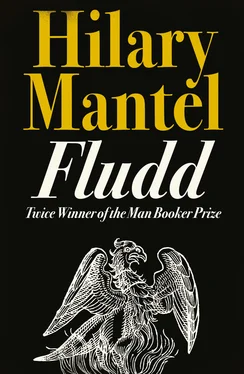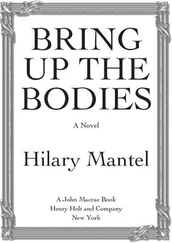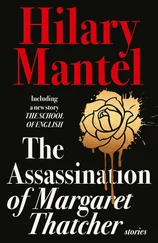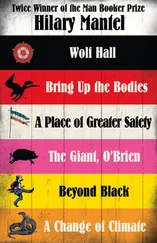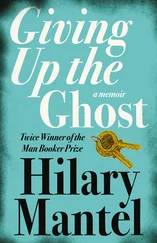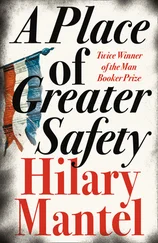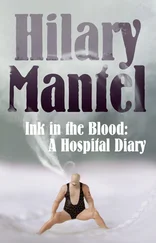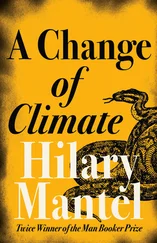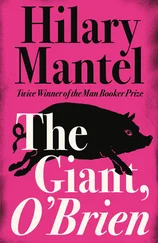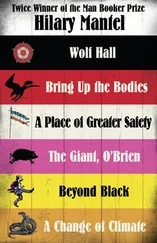Off Upstreet was Church Street, another steep hill; it was unpopulated, lined with ancient hedgerows, smoke and dust forming a perpetual ash-like deposit on the leaves. Church Street petered out at its summit into a wide track, muddy and stony, which in Fetherhoughton was known as the carriage-drive. Perhaps sometime in the last century a carriage had driven up it, conveying some pious person; the drive went nowhere except to the village school, to the convent and to the Church of St Thomas Aquinas. From the carriage-drive, footpaths led to the hamlet of Netherhoughton, and the moors.
Atop one of the smaller village streets sat a Methodist chapel, square and red, and about it was its cemetery, where chapel-going people came to early graves. There were a few Protestants sprinkled through the terraced rows; each yard might have some. The Protestants’ houses did not have, pinned to the door of the cupboard in the sitting room, a coloured picture of the Pontiff with a calendar beneath; but otherwise, their houses were not readily distinguishable.
And yet the Protestants were quite different, in the eyes of their neighbours. They were guilty of culpable ignorance. They refused to take on board the precepts of the True Faith. They knew that St Thomas Aquinas was there, but they refused to go in it. They refused to turn over their children to Mother Perpetua for a good Catholic education, and preferred to send them on a bus to a school in another village.
Mother Perpetua would tell the children, with her famous, dangerously sweet smile: ‘We have no objection to Protestants worshipping God in their own way. But we Catholics prefer to worship Him in his.’
The Protestants were damned, of course, by reason of this culpable ignorance. They would roast in hell. A span of seventy years, to ride bicycles in the steep streets, to get married, to eat bread and dripping: then bronchitis, pneumonia, a broken hip: then the minister calls, and the florist does a wreath: then devils will tear their flesh with pincers.
It is a most neighbourly thought.
The Church of St Thomas Aquinas was a massive building; its walls were plastered by deposits of soot and grease, so that their original grey was black. It stood on a kind of pimple of higher ground, and this fact occasioned little flights of stone steps and cobbled ramps, slippery and mossy underfoot; clustering at the base of the tower, they looked like household terriers running at the feet of some dangerous, dirty tramp.
The Church was in fact less than a hundred years old; it had been built when the Irish came to Fetherhoughton to work in the three cotton mills. But someone had briefed its architect to make it look as if it had always stood there. In those poor, troubled days it was an understandable wish, and the architect had a sense of history; it was a Shakespearian sense of history, with a grand contempt of the pitfalls of anachronism. Last Wednesday and the Battle of Bosworth are all one; the past is the past, and Mrs O’Toole, buried last Wednesday, is neck and neck with King Richard in the hurtle to eternity. This was – it must have been – the architect’s view. From the Romans to the Hanoverians, it was all the same to him; they wore, no doubt, leather jerkins and iron crowns; they burned witches; their buildings were stone and quaint and cold, their windows were not as our windows; they slapped their thighs and said prithee. Only such a vision could have commanded into being the music-hall medievalism of St Thomas Aquinas.
The architect had begun in a vaguely Gothic way and ended with something Saxon and brutal. There was a tower at the west end, without spire or pinnacles, but furnished with battlements. The porch had stone benches, and a plain holy-water stoup, and malodorous matting that was beaten thin by scuffling feet – matting that was always sodden, and might have been composed of some thirsty vegetable matter.
The doorway had a round arch of a Norman persuasion, but no recessed arches, no little shafts, no ornament, not so much as a lozenge, a zigzag, a chevron; stern had been the mood the day that doorway was designed, and the door itself was strapped and hinged in a manner that put one in mind of siege warfare and starvation and a populace reduced to eating its rats.
Inside the church, in the pit-like gloom, there was a deep font, without ornament, with a single plain shaft, and big enough to cope with a multiple birth, or dip a sheep. There was a west gallery for the organ, with a patch of deeper blackness beneath it; the gallery itself, though you would not know until you had swum into that blackness, was reached by a low little doorway with junior siege-hinges, and a treacherous spiral staircase, with risers a foot deep. There were two side chapels, two aisles, and it was in the arcades that the architect’s derangement was most evident, for the arches were round or pointed, seemingly as a consequence of some spur-of-the-moment decision, and as one blundered through the nave, the confusion of style gave the church a misleadingly heroic air, as if it had been built, like one of the great European cathedrals, in successive campaigns a hundred years apart. The shafts of the columns were squat and massive cylinders, made of a greyish, finely pitted stone, and their uncarved capitals resembled packing cases.
The lancet windows were grouped two by two, and surmounted by grudging tracery, here a circle, here a quatrefoil, here a dagger trefoil. In each of the lights stood a glass saint, bearing his name on an unfurling scroll, each scroll inscribed in an unreadable Germanic black-letter; the faces of these glass saints were identical, their expressions were all alike. The glass itself was of a mill-town sort; there was a light-refusing, industrial quality about its thick texture, and its colours were blatant and vile: a traffic-light green, a sugar-bag blue and the dull but acidic red of cheap strawberry jam.
There were stone flags underfoot, and the long benches were varnished with a treacly red stain; the doors to the single confessional were low and latched, like the doors to a coalshed.
Father Angwin and the bishop came out through the draughty vaulted passage from the sacristy, and emerged by the Lady chapel in the north aisle. They looked about; not that it profited them. In all, St Thomas Aquinas was as dark as Notre-Dame and resembled it in one other alarming particular – that at any given moment, standing in one part, you lost all sense of what might be happening in another. You could not see the roof, although you had – in St Thomas Aquinas—an uneasy, crawling feeling about it, that it might not be so far above your head at all, and that it might lower itself a little from time to time, just that little inch or so that betrayed its ambition to unite, one winter’s day, with the stone flags, and freeze into a solid block of unwrought masonry, with the worshippers between. The church’s inner spaces were aggregations of darkness, with channels of thicker darkness between. There were plaster saints—which the bishop now surveyed as best he might – and before most of them, in severe iron racks that looked like the bars of a beast-house, devotional candles burned; yet it was a lightless burning, like marsh-gas, a flickering in an unfelt, breathless wind. There were draughts, it was true, which followed each worshipper like a bad reputation, which dabbed at their ankles and climbed into their clothes, as cats do with people who do not like them. But when the church was empty the draughts lay quiet, only whistling from time to time about the floor; and the candle flames rose up towards the roof, straight and thin as dressmaker’s pins.
‘These statues,’ said the bishop. ‘Have you a pocket torch?’ Father Angwin did not reply. ‘Then give me a tour,’ the bishop demanded. ‘Start here. I cannot identify this fellow. Is he a Negro?’
Читать дальше
